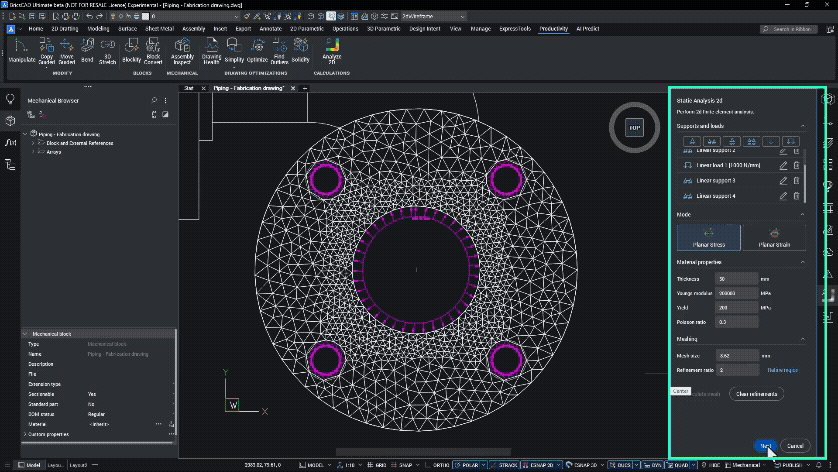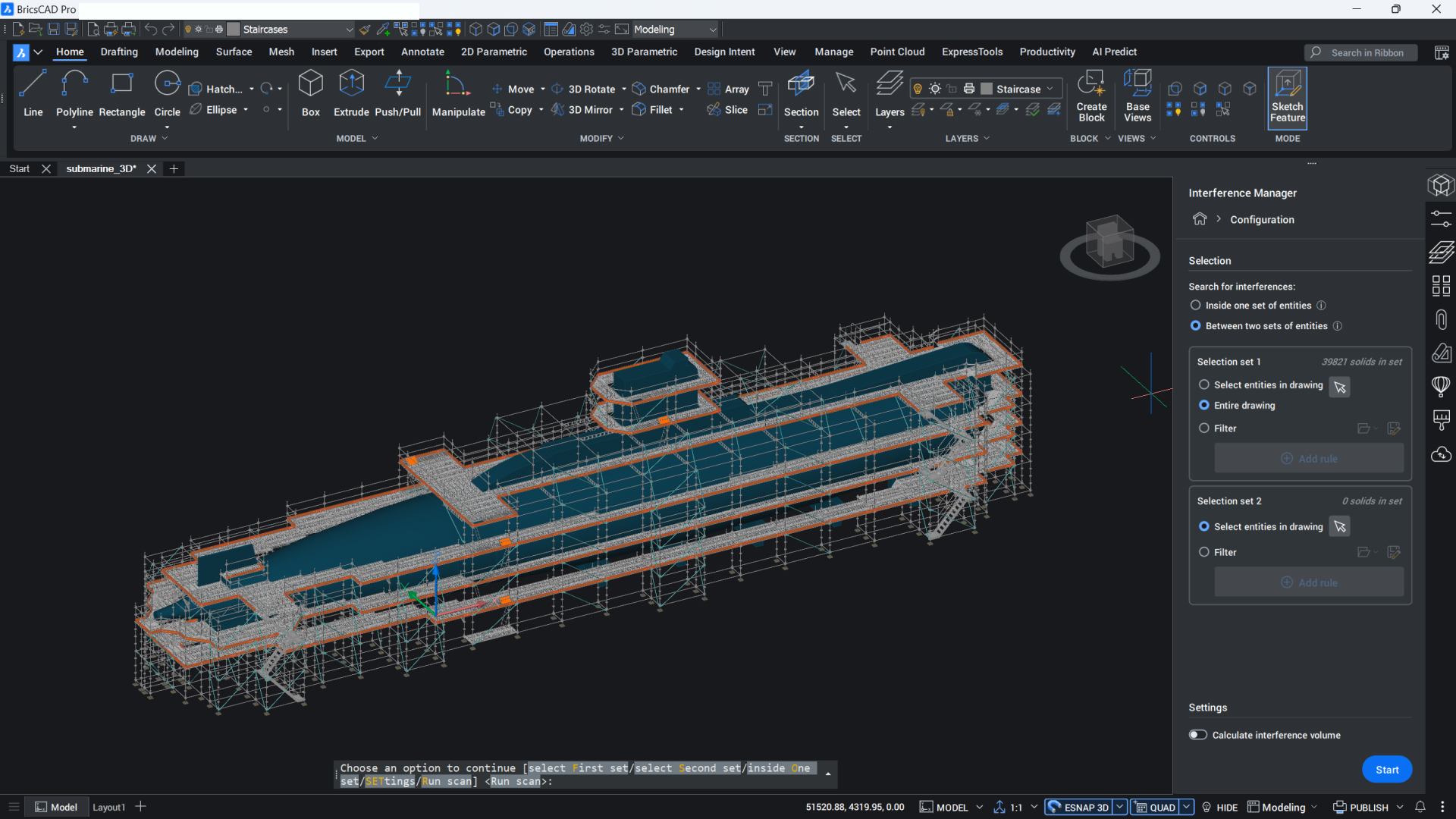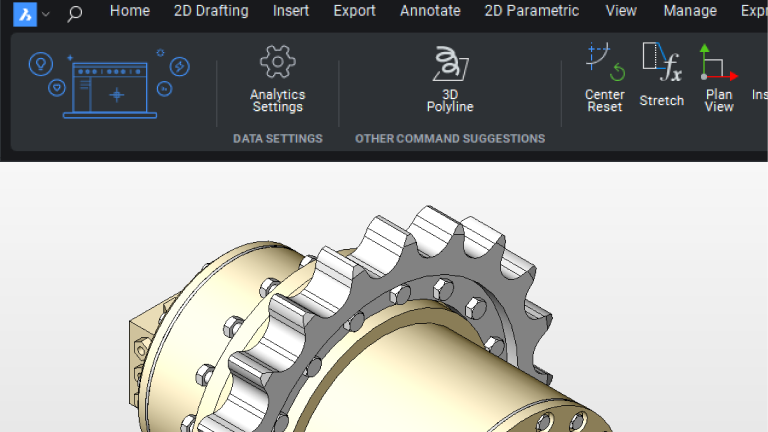BricsCAD® V26 is here, bringing more than 60 new and enhanced features to help you move more quickly and efficiently from design to production. This release is about flow. Which means fewer clicks and delays, and more control while you’re drafting, modeling, fabricating, or surveying.
No matter which version of BricsCAD you're currently running, you’re in for a meaningful performance boost.
From V22 to V26: Building Momentum
When BricsCAD V22 dropped, it brought 42 new features and 156 enhancements. By V25, that number climbed to 36 new and 187 enhancements. Now, V26 adds more than 60, continuing the steady evolution of the true CAD alternative that’s faster, smarter, and easier to customize for your work.
Each new release builds on your familiar workflows, keeping the BricsCAD experience lightweight but powerful. You can focus on your designs, not on figuring out how the software works.
General Design Innovations
Enhanced usability, faster navigation, smoother UI.
BricsCAD V26 gives the BricsCAD interface a tune-up. You’ll notice it every day: cleaner visuals, more responsive commands, and new shortcuts that save time.
- Look From Widget (Enhanced): A navigation tool that lets you seamlessly pick and shift your 3D view. A small change with a big impact on modeling speed.
- Streamlined Workspace Selection (Enhanced): A new launcher makes it easier to start in the right workspace, fast.
- Display Scaling and Accuracy (Enhanced): Smarter scaling across fractional monitors. No more mismatched UI panels.
- Customizable Settings Dialog (Experimental): Personalize BricsCAD your way.
- Notification Dialog Box (Enhanced): Clear, consistent pop-ups keep you in the loop without breaking your workflow.

Together, these tweaks make the platform feel faster and more intuitive, especially if you’re switching between 2D, 3D, and BIM workspaces.
Importing and Creating Files
Streamlined model handling and faster geometry creation.
Design iteration gets faster with V26’s new modeling and file-management tools.
- Dynamic Block Creation (Experimental): Create Dynamic Blocks natively (outside the U.S.).
- 3D Solid Manipulation Grips (New): Resize and reshape primitives and polysolids with freeform grips. No need to dive into dialog boxes.
- Fillet and Chamfer All Edges (New): Apply consistent edge detail in a single click.
- DWG Units, Flatshot, and Section Block via Command Line (New): Run key modeling tools in unattended scripts for automated workflows.
- Centralized Point Cloud Management (Enhanced): Manage large scan datasets from one searchable interface.
- Quick Select (Enhanced): Define multiple filters at once to grab complex geometry faster.
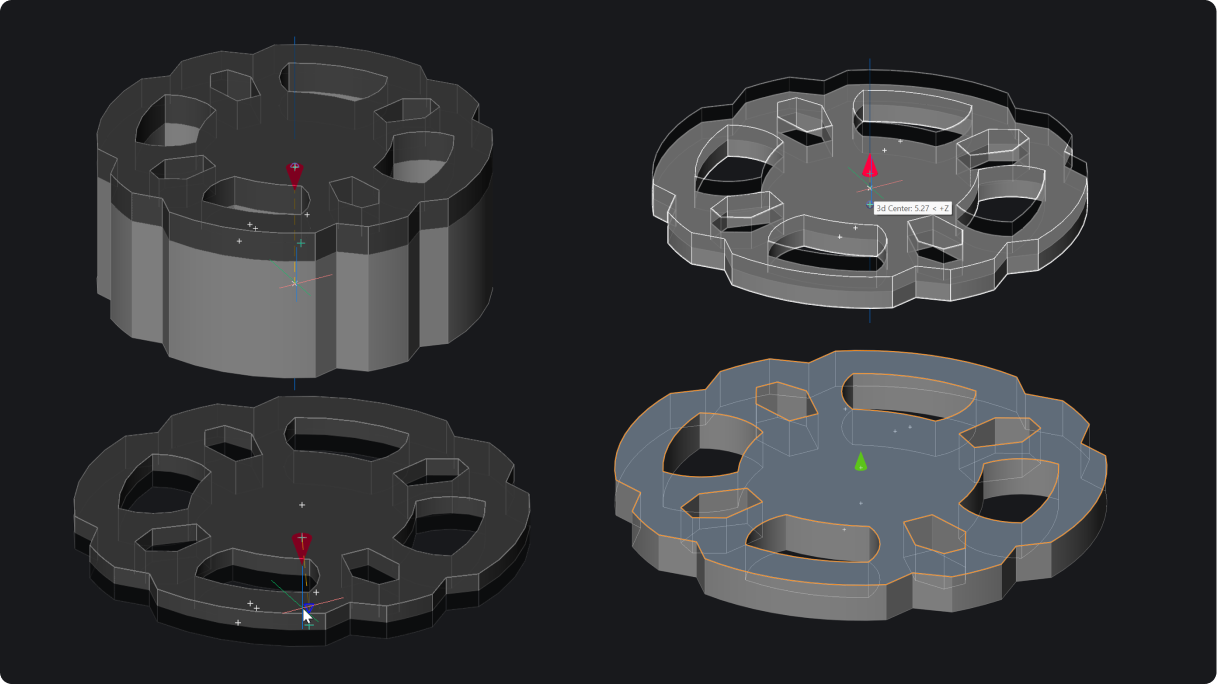
BricsCAD V26’s command-line workflows make automation simple—ideal for users who script or standardize repetitive drawing tasks.
Optimizing and Editing
Precision control for complex models.
From quick edits to major model checks, BricsCAD V26 tightens up geometry handling and feedback.
- Interference Detection (Enhanced): Filter, inspect, and resolve interferences in an intuitive panel.
- Section Plane Accuracy (New): More control when slicing through 3D models, as grips and properties now adjust type and depth.
- Constraint Symbol Grouping (New): Groups symbols for clarity in dense drawings.
- Blockify Inside Create Block Definition (New): Detect reusable geometry as you create blocks.
- Outline for Render Mode (New): See your models more clearly. Outlines in Render mode make point clouds pop with crisp edges.
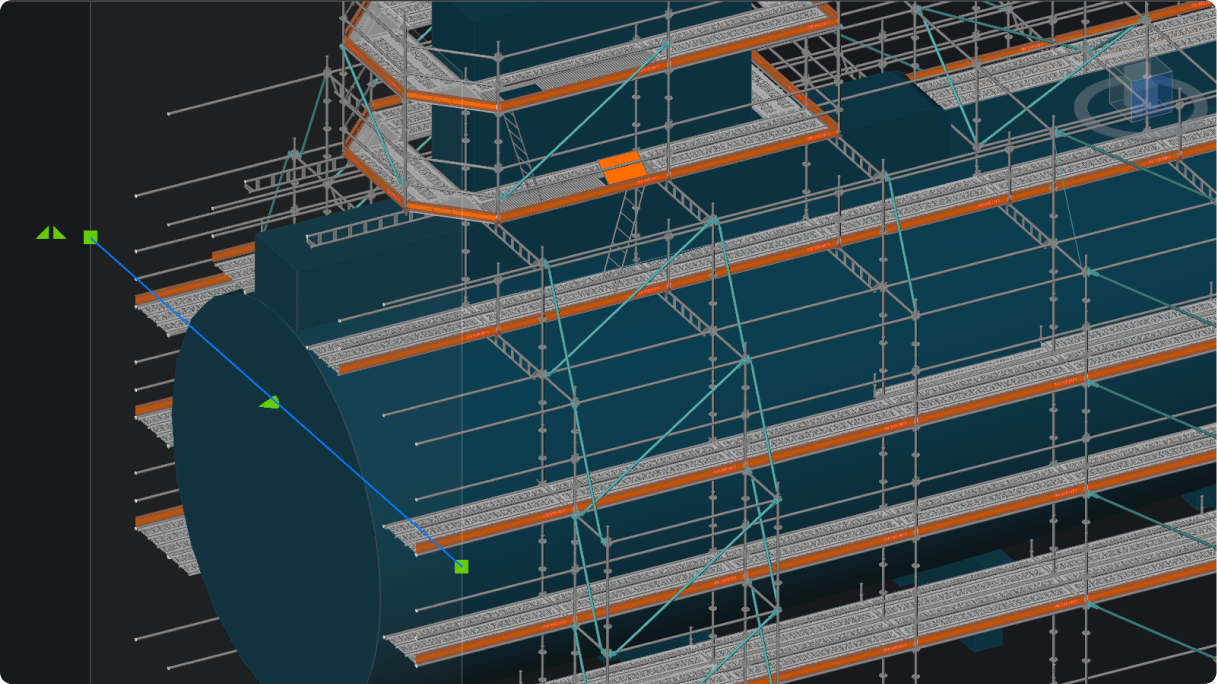
These updates remove a lot of “CAD housekeeping.” Less hunting for blocks, fewer dialog hops. Just edit, move, or measure and keep designing.
Detailing and Annotating
Better visualization, smarter dimensions, and easier documentation.
Production drawings get another layer of polish in V26, with time-saving enhancements across detailing tools.
- 2D Polyline Tracing on Point Clouds (New): Trace clean linework directly over scan data, with just one click per segment.
- Slice Section View (New): Generate adjustable section slices for visual clarity.
- Section View Plane Visibility (Enhanced): Toggle section plane display on or off within 3D model views for a cleaner workspace.
- Geometry Measure for 2D and 3D (New): Measure distances, radii, angles, and volumes directly in the model space with real-time feedback.
- View Base Model Generation (Enhanced): Continue working while drawing views generate in the background.
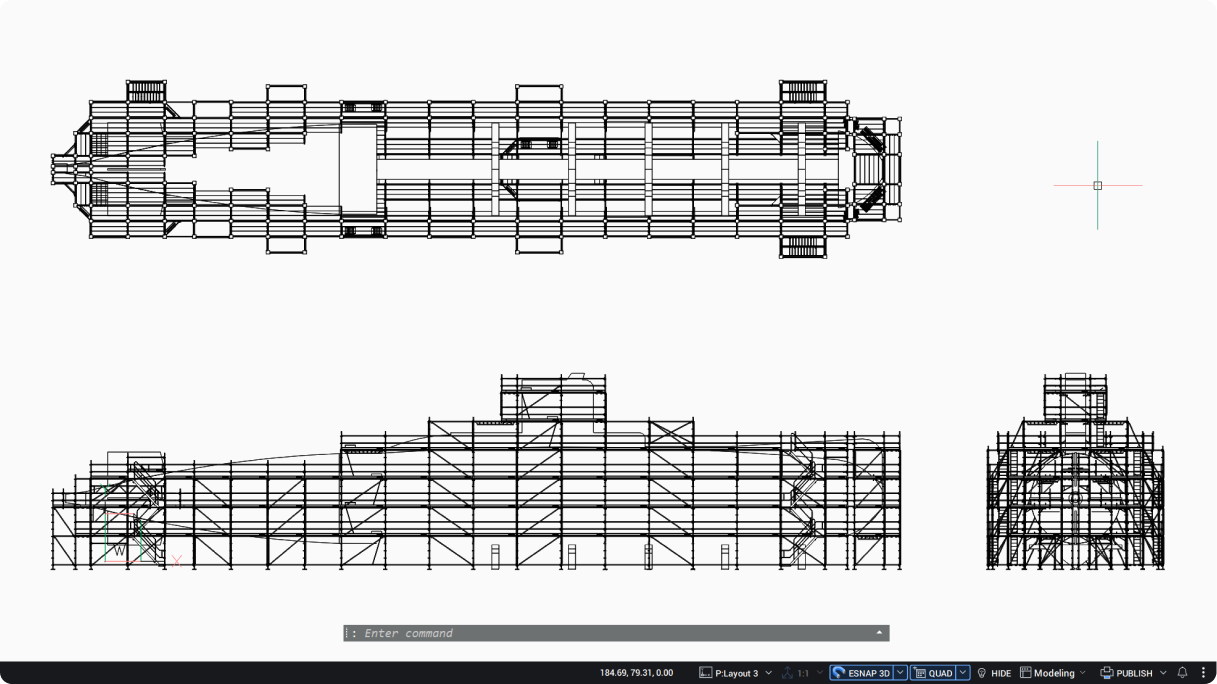
Together, these make the production stage more predictable and far less manual. This is ideal for users jumping between design and documentation.
BIM, Mechanical and Survey Highlights
Discipline-specific power tools, aligned with open standards.
BricsCAD V26 continues to expand across disciplines, improving how teams share, classify, and deliver data.
BIM:
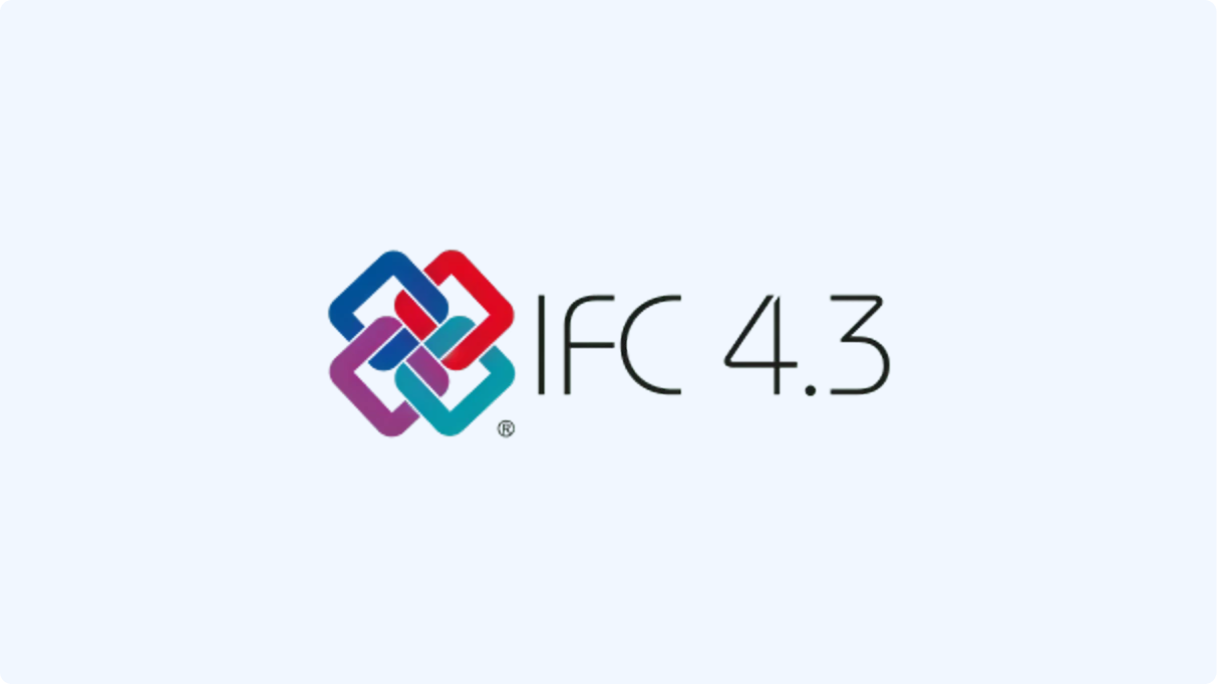
- IFC 4x3 Support (New): Export and classify with the latest IFC standard for plant and infrastructure projects.
- Project Collaboration (Enhanced): Shared data access across teams for smoother handovers.
- Auto-Line Detection and Ortho Image Generation (Enhanced): Turn point clouds into ready-to-use geometry.
Mechanical:
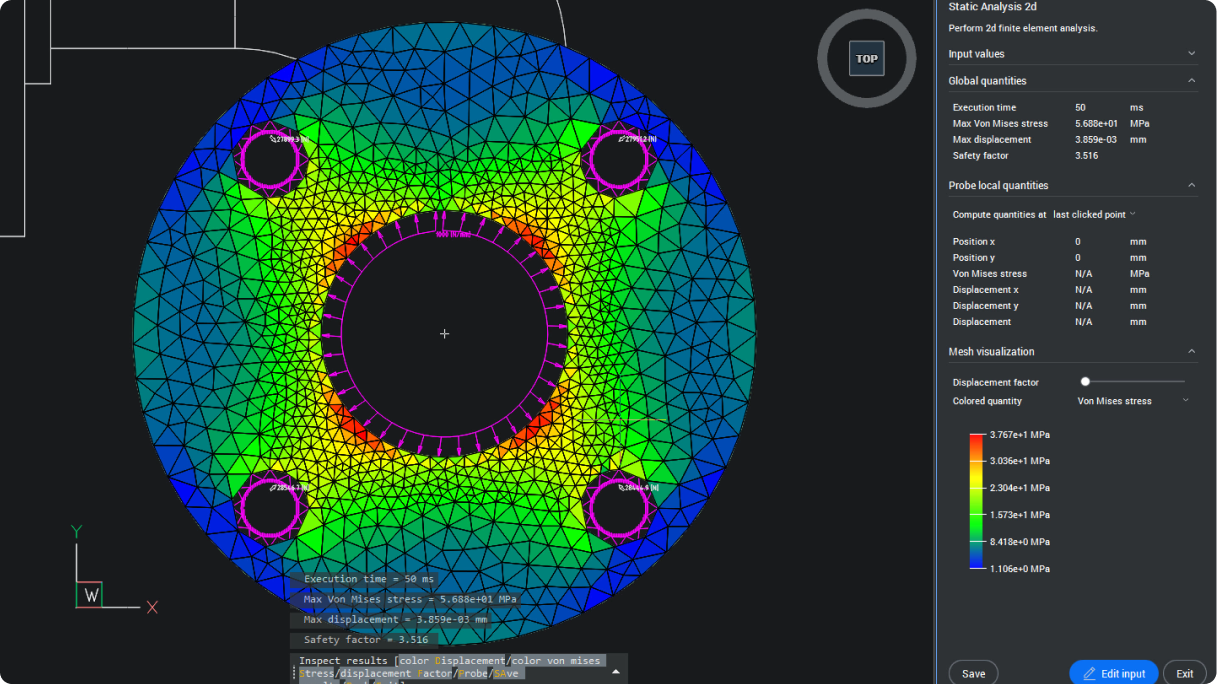
- Optimized Sheet Metal Recognition (Enhanced): Better edge classification and extrusion control.
- Faster 2D FEA (Enhanced): Reuse setups, view reaction forces, and highlight zones instantly.
BricsCAD Survey Toolset:
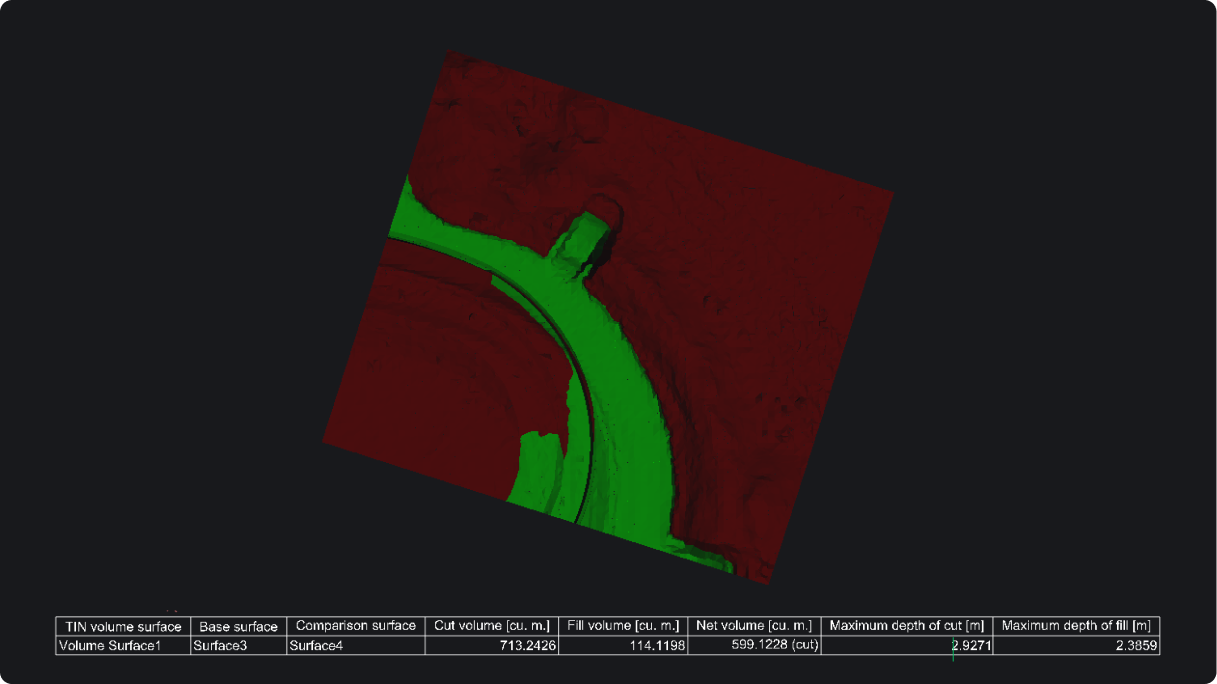
- Civil Section Creation (New) and TIN Cut/Fill Reports (New): Streamline terrain analysis with accurate volumetrics.
- GML Import/Export (Enhanced): Standardized geospatial collaboration.
- Auto Mapping Sets (New): Auto-assign styles and layers for faster drafting.
These updates help you keep data aligned through your project workflow.
The Alternative in Action
Every new BricsCAD release aims to connect every stage of your design-to-production process. V26 keeps that philosophy intact. The goal isn’t to reinvent CAD; it’s about making every stage a little sharper and more connected.
So, whether you’re detailing parts, checking tolerances, or exporting IFC data, V26 reduces the gaps between design intent and production output. Fewer clicks. Fewer errors. Faster results. That’s BricsCAD V26.
Explore all the new, enhanced and experimental features on the What's New in BricsCAD V26 page.
Try BricsCAD V26 for Free
You can explore every new feature for yourself with a free 30-day trial. Get BricsCAD V26 now.
And if you missed it, catch the full BricsCAD V26 Launch recording to see the team discuss and demo these capabilities.
BricsCAD V26 is a practical upgrade that streamlines your daily work. Real tools, real speed, real results. Welcome to a smoother design-to-production process.
